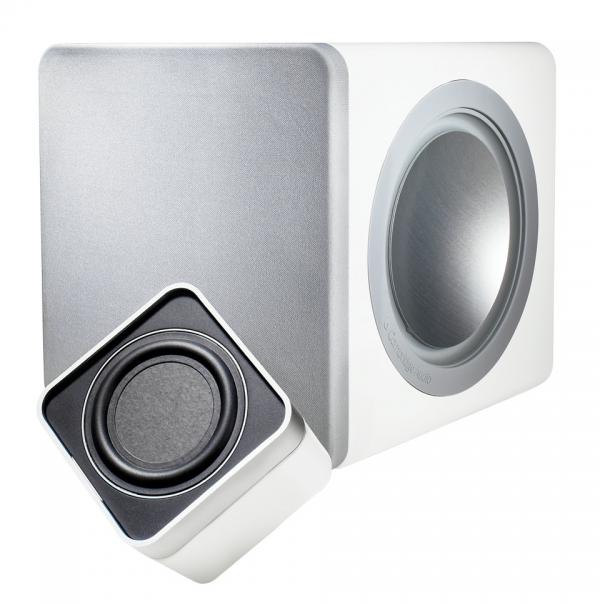Test Report: Cambridge Audio Minx 215 System

There are times when prejudice is forgivable. One can hardly be blamed for assuming that store-brand whiskey, truck-stop coffee, or music by a lite-jazz artist who goes by a single-letter surname is going to suck. Likewise, one might reasonably presuppose that a little cube-shaped speaker isn’t going to please serious listeners. After all, a 2.5-inch driver in a small enclosure can’t produce bass, and it’s not going to give you the airy treble you get from a good tweeter.
Thus, from a glance, one could sensibly denounce Cambridge Audio’s Minx compact speaker system as nothing more than a low-fi array suitable only for a kid’s room. But while such prejudice would be defensible, it wouldn’t be appropriate in this case.
Most little cube-shaped speakers use a cone-shaped midrange/tweeter driver. Such a driver starts to become directional — more like a flashlight, less like a floodlight — at sound wavelengths of roughly the driver circumference or smaller. For a 2.5-inch driver, that’s about 2 kHz and up. Because much of the treble is focused in a tight beam, it can’t bounce around the room to create that seductive ambience and detail you get with a good 1-inch tweeter.
The Balanced Mode Radiator (BMR) driver in the Minx satellite speakers combats the flashlight effect by using a 2.25-inch fl at honeycomb diaphragm designed to flex in addition to moving back and forth in a piston-like fashion. According to HiWave (formerly NXT), the company that licenses BMR, the flexing motion lets the 2.25-inch diaphragm produce the broad dispersion of a tweeter while delivering strong midrange response.
What, though, has been done to fix the weak bass response that tends to leave a sonic hole between a little cube-shaped speaker and its subwoofer? Nothing, really, except for using a compact neodymium magnet to provide a bigger acoustical cavity inside the itsy-bitsy enclosure.
The Minx satellite comes in two forms: the single-driver Min10 and the dual-driver Min20. To complement the sats, Cambridge Audio offers three different Minx subwoofers: the X200, X300, and X500. In order to see what BMR can really do, I decided to test the smallest possible Minx system, consisting of five Min10 satellites and an X200 subwoofer. The X200 uses a 6.5-inch driver, dual 6.5-inch passive radiators, and a 200-watt digital amp, all squeezed into a tiny cube measuring about 8.5 inches.
Setup
One thing you gotta love about little cube-shaped speakers: They’re easy to install. Weighing almost nothing and taking up almost no space, the Min10s could go almost anywhere. I used the supplied mounts to fasten the front left, center, and right speakers to the wall around my projector screen. I attached the surround speakers to a pair of slim, adjustable $119-per-pair stands. Table stands and pivoting wall mounts are also available.
The Min10 features a speaker-cable connector I’ve never before seen. Each speaker has ports for two banana plugs and also comes with a couple of tiny banana plugs to which you can connect bare speaker wires. It’s a compact solution that provides a secure connection.
The X200 has stereo line inputs and outputs; I connected the left-channel input straight to my receiver’s subwoofer output. Along with the usual controls for volume, phase, and crossover frequency, there’s also a 4-pin DIN port for a promised wireless option.
The only critical part of the installation is setting the subwoofer crossover frequency. Even the industry-standard 80-Hz setting could let through enough bass to trash the little BMR drivers in short order. Given the Min10’s rated 140-Hz bass extension, I figured the 150-Hz crossover setting on my receiver would be adequate to protect the dainty drivers. And I was right — more or less.
- Log in or register to post comments




















































